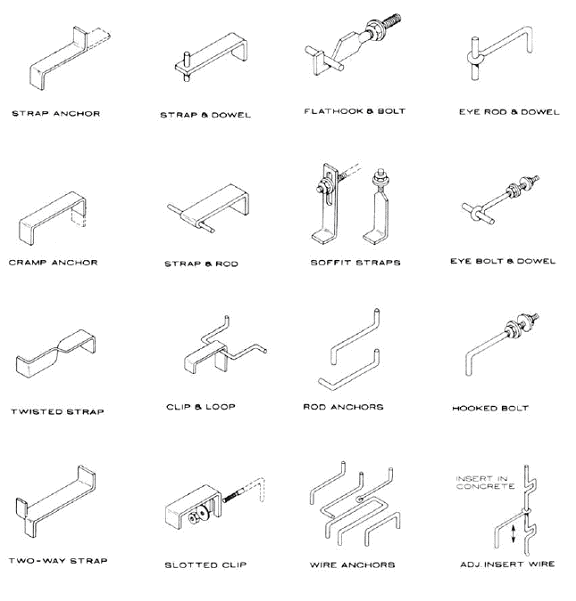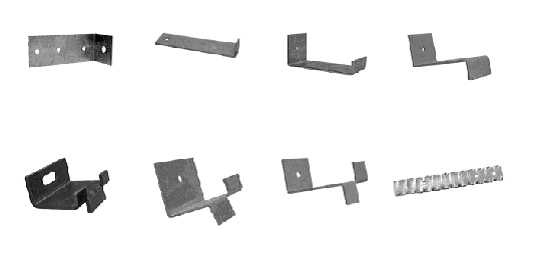
|

 |
For Additional Information, Also See our How To Videos.
|
Installation
Most modern day masons have come to realize that the easiest way to install stone is with a mechanical fastener. A favorite method (at least from my personal observations) is to drill a pilot hole and insert a masonry anchor (screw) directly into the stone. It’s surprisingly fast, strong and effective.
|
Basic Techniques
With the numerous methods employed over many centuries, it has come down to three basic methods of installing stone. All work well, but the in-beds (which we’ll discuss below) require the most planning, because the inserts are usually part of the manufacturing process (some in-beds are installed with epoxy after the stone fabrication).
- Slots Cut - This works well with clips bent to fit the slots used in wall veneers or trim surrounding the doors. Easily hidden in the joints between stone, a horizontal slot can be cut in the back and a lintel installed making the attachment blind.
- Dowel Pins or Screws - Simple dowel pin is to drill a hole and put a steel pin into the stone and wire it back to the building. A favorite of today’s masons is the screws. They are predrilled and when driven home make a steadfast attachment. Mostly used between joints in the stone, the screws can also be used on the back with straps attached to the wall. Pins are used between the stone joints to increase shear strength. In the past, wire was favored as a tie back to the wall after wrapping it around the pins.
- In-Beds or Threaded Inserts - Very common in commercial installations where steel structures are most often used, these are used for welding or bolting. (It must be noted - this will require access for the weld or bolt).
Under these basic types, many techniques are used - depending on the situation. Here, we will review a few examples, but by no means are we implying they are the only way stone is installed.
|
Bearing the Load
So often I am asked if stone is load bearing? The answer is YES… depending on the size of the stone and the amount of the load.
- Span loading is the ability to span distances by placing steel lintels on the building or over openings. The lintels can be bolted to the structure for lateral loading. When this is done, one preference is to precisely slot cut into the stone and insert the steel lintel, thus allowing the stone to rest on the steel lintel while hiding it from view.
Supporting the stone from underneath, the steel lintel is exposed - unless sandwiched between mortar joints in horizontal runs, which completely covers the steel. It should be mentioned that coating the steel inhibits possible rust stains from forming - common in this practice.
- Lateral loading is used most in attaching wall veneers. You can screw into the wood steel or masonry frame with varying types and size screws depending upon your material & strength requirements. Some walls have air space behind the veneer to collect condensation on the backside of the veneer. In plaster or stucco applications the stone is installed similar to brick, but the fastener is generally beefier to carry the stone weight on the wall framing instead of transferring the weight using the veneer to the foundation.
- Shear loads are primarily used in pillars or columns that are free standing… but in the case of wall caps or parapet caps it may be desirable to tie the caps to the structure.
|
Attaching Stone to the Structure.
So far, we’ve covered attaching to the stone... now let’s discuss the structure.
In centuries past, where solid block walls used stone as the entire structure, the walls were literally three feet thick. But as far back as the Roman Empire, even these walls used dowel pins made of bronze when the builder thought necessary.
Today, you have three basic types of structures used in contemporary Architecture: WOOD FRAME, MASONRY FRAME, and STEEL FRAME.
Attaching stone to the structure is done in many ways, and in most cases you can attach to standard framing members. But, sometimes it is necessary to have the structure specifically designed to make the stone installation as easy as possible… especially important in commercial applications where lightweight steel framing may be used, or where the spans are very long between framing members.
Common Fasteners
|





|
Common Anchors
|

|
Other Straps
|

|
|









